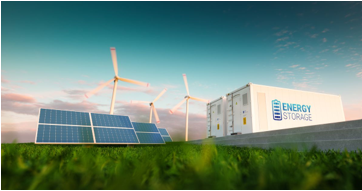 The expansion of variable renewable energy sources will require increased electric system flexibility. Energy storage can provide grid operators like MISO and PJM a way to keep power supplies stable and reliable when renewable resources are not available. As of January 2019, Indiana had more than 10 energy storage projects completed or currently being studied for grid impact.
The expansion of variable renewable energy sources will require increased electric system flexibility. Energy storage can provide grid operators like MISO and PJM a way to keep power supplies stable and reliable when renewable resources are not available. As of January 2019, Indiana had more than 10 energy storage projects completed or currently being studied for grid impact.
What is Energy Storage?
“Storage” refers to technologies that can capture electricity, store it as another form of energy (chemical, thermal, mechanical), and then release it for use when it is needed. Lithium-ion batteries are one such technology. Although using energy storage is never 100% efficient—some energy is always lost in converting energy and retrieving it—storage allows the flexible use of energy at different times from when it was generated. So, storage can increase system efficiency and resilience, and it can improve power quality by matching supply and demand.
Storage facilities differ in both energy capacity, which is the total amount of energy that can be stored (usually in kilowatt-hours or megawatt-hours), and power capacity, which is the amount of energy that can be released or discharged at a given time (usually in kilowatts or megawatts). Different energy and power capacities of storage can be used to manage different tasks. Short-term storage that lasts just a few minutes will ensure a solar plant operates smoothly during output fluctuations due to passing clouds for example, while longer-term storage can help provide supply over days or weeks when solar energy production is low or during a major weather event, for example.
